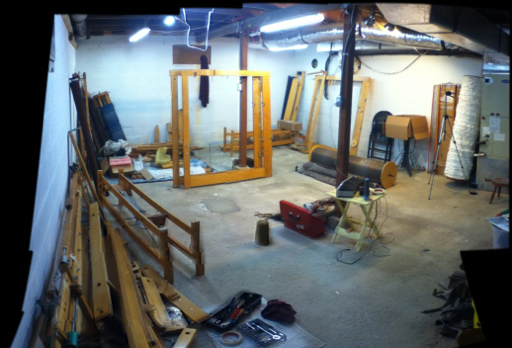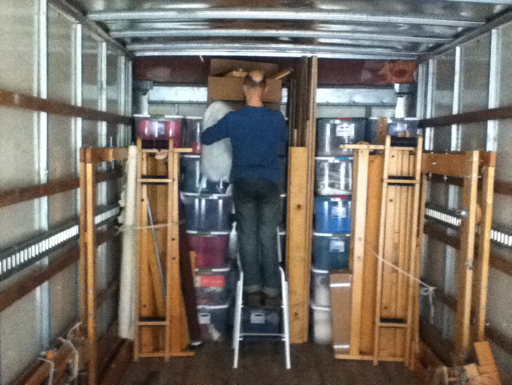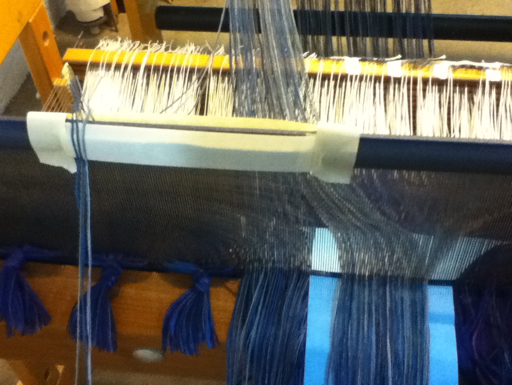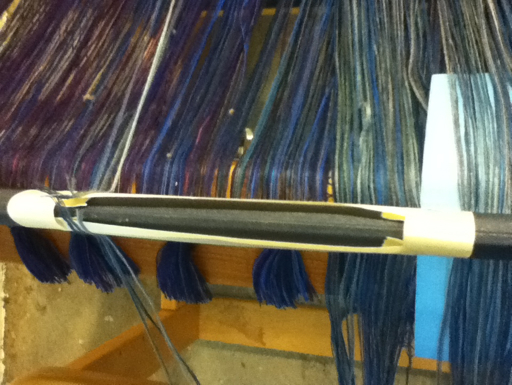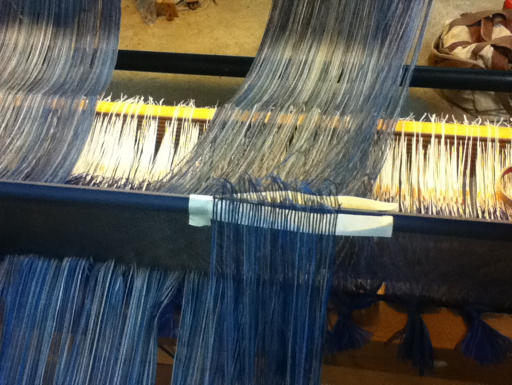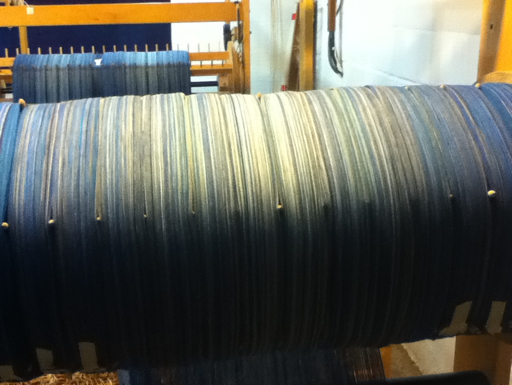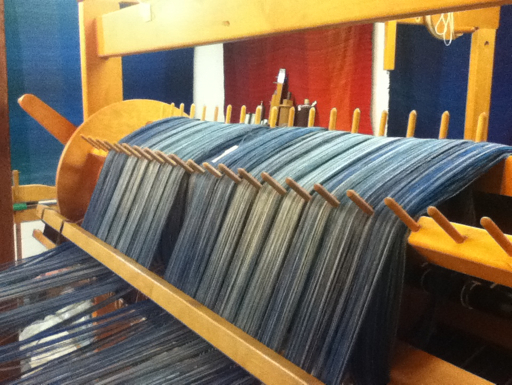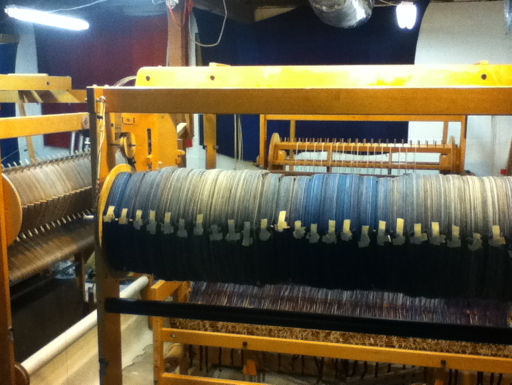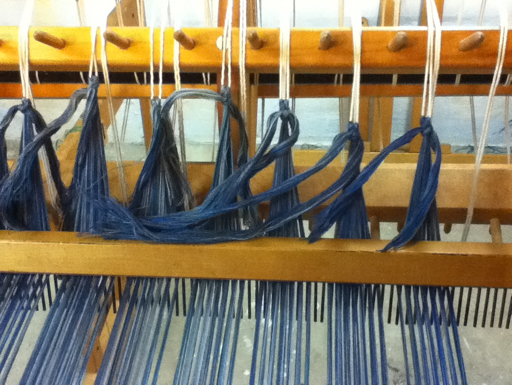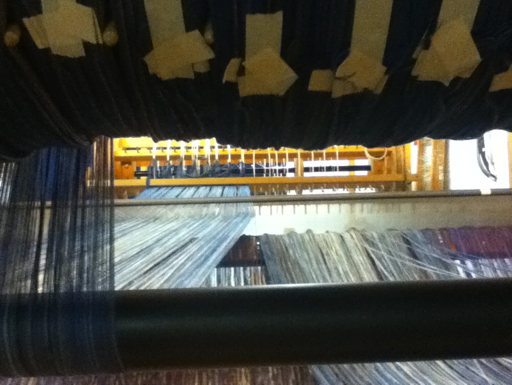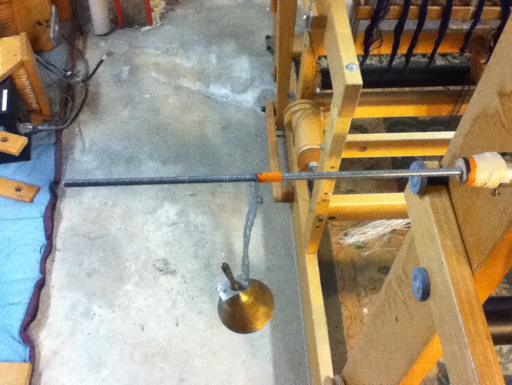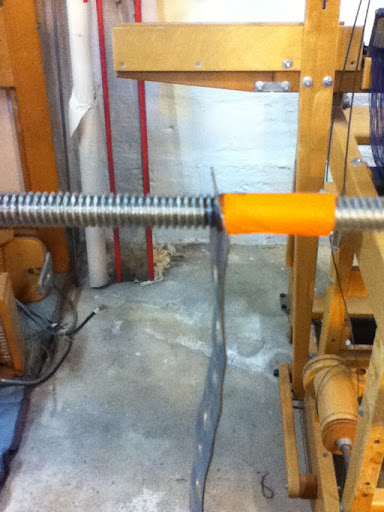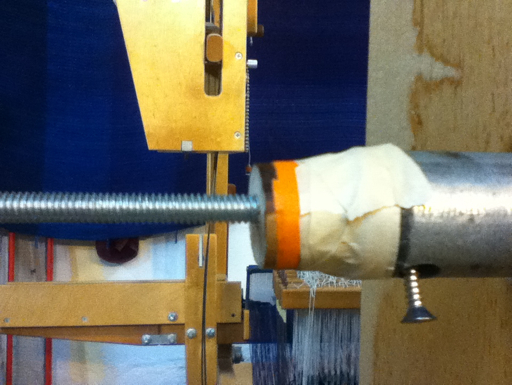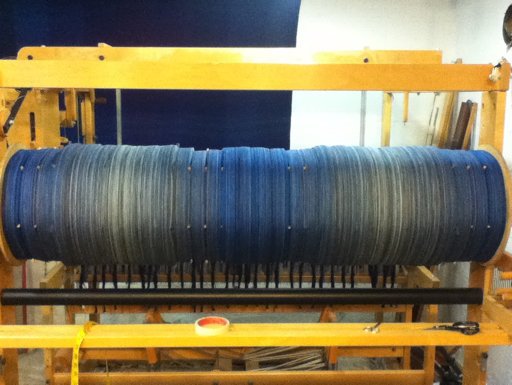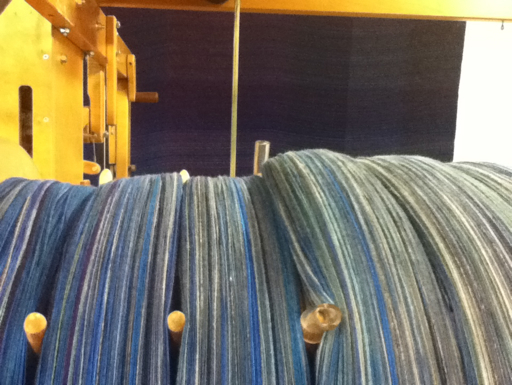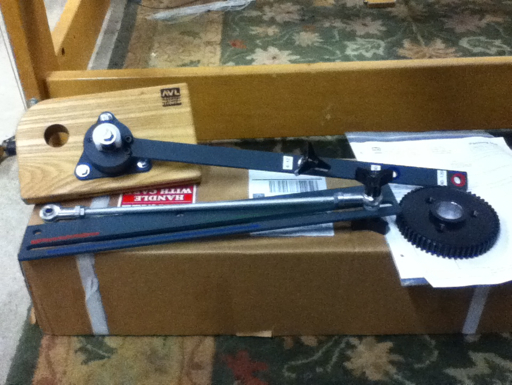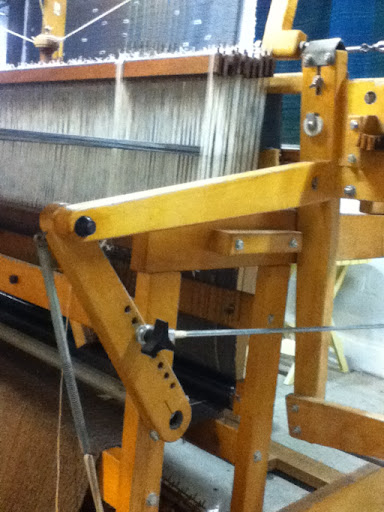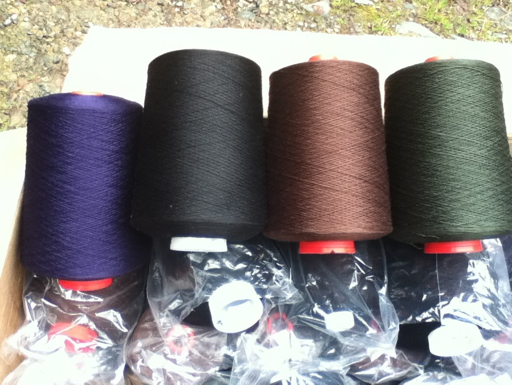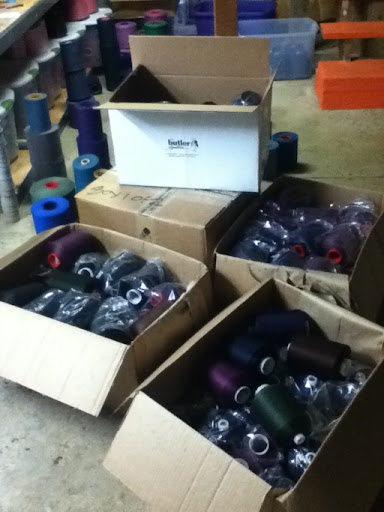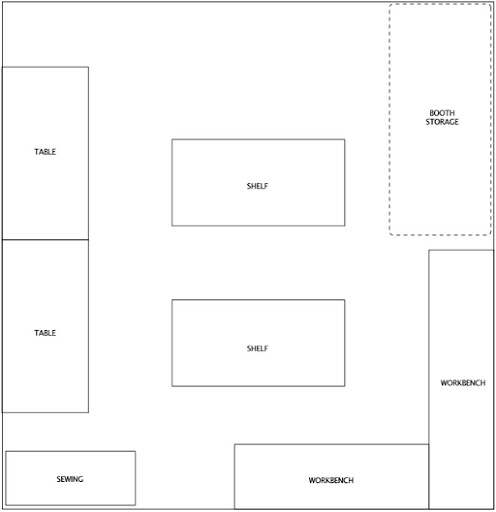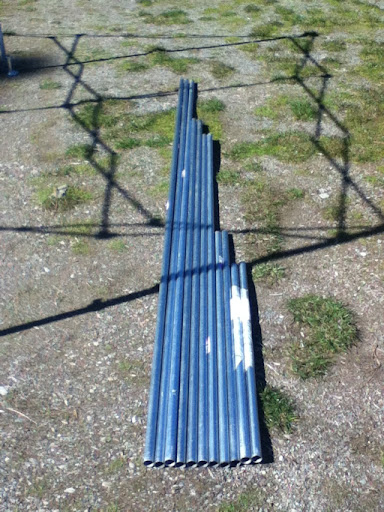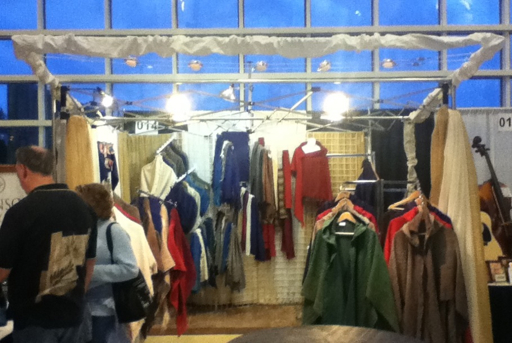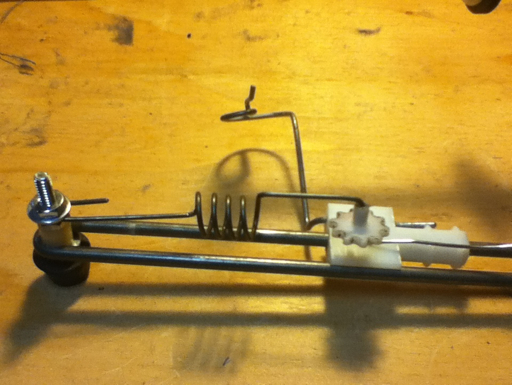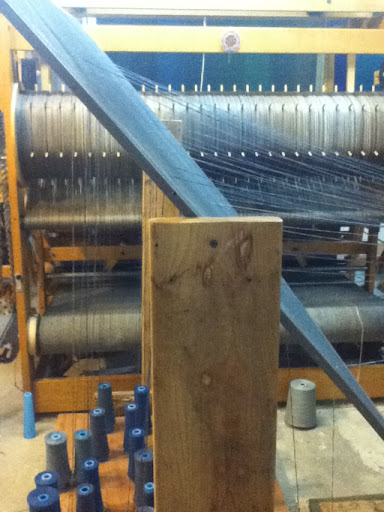Someone recently asked me about my tension box and why theirs might be breaking threads. Thanks for asking!
I though I'd post the answer to my main blog so everyone can read it.
I made my own tension box and I'm surprised it has lasted so long! I expected to replace it with a "professional" one by now. Instead, I've modified this one to keep on trucking.
There are several features that I want out of a new box based on my way of working. First, I need both the entry and exit reeds to have an open top because I unthread and rethread the box for every section. This is one of the compromises that I make in order to ply my own warp threads to get the color gradients that I use.
I also need the box to be completely open on one side so that I can route the threads around the pegs quickly and easily.
But, really, when it comes down to it, this one is not getting replaced because it works fine. I've warped over 250 sections using a variety of threads and it works great.
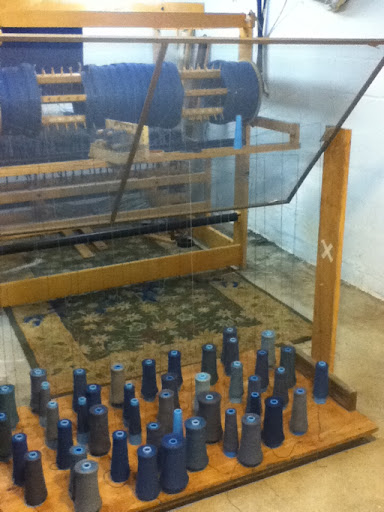
I also built my rolling cone rack. It features a tiltable screen which enables me to reverse the order of the cones in a section by simply turning the rack and flipping the screen. This is useful because I use bookmatching as a design element in my stripe patterns. Reversing the cones by hand for each section would be a lot of extra work and very prone to errors.
Breaking Threads
And now, on to the question... What causes threads to break in the tension box?
Of course, I can't tell exactly what's going on without seeing your setup, but a few possibilities come to mind:
1. The pegs in the box are configured to give too much tension, causing the threads to snap. Reconfigure the pegs to give you less tension. If your box has a lot of pegs, you may need to remove some.
2. The threads are brittle. This happens often with overdyed black yarns. They're basically unusable because of their weakness. If you pull on the yarns and they fall apart easily, you'll have to get new yarn. Weak thread makes weak cloth.
3. The threads are tangling on their way into the box and snapping because they're caught in the entry reed.
4. The threads are catching or tangling somewhere else on the way to the box. This can be tricky to catch. Maybe it's the cone rack or the cones themselves. Maybe threads are sticking together somewhere. It's easier to find this stuff if someone else can turn the beam while you act like Sherlock Holmes and inspect every part of your setup.
The last two are more complicated to fix. They are the reasons why I built the cone rack in the first place. The diagonal screen unspools the cones and gives them a clear path to the tension box without being able to snag on each other or anything else.
If you're using chained warp sections, consider a "warping valet" with very little weight - just enough to keep your threads from tangling on the way into the tension box. If you're winding from cones, try fixing a piece of landscape mesh, chicken wire or screen at an angle above your array of cones, ensuring that each cones unwinds straight up to prevent tangling.
I'm also happy to give more help if you can send me photos of your setup and tell me some more about the threads you're using.
An Offer
I'm putting this out there just because I've never explicitly said this before... I'm happy to help other weavers to figure out problems with their weaving.
When it comes to weaving, I am very well versed in a few things, namely mechanical AVL production dobby looms and sectional warping with cotton. Anything else is hit-or-miss, but I'll let you know if I can help. I have worked on all kinds of other looms, but the lion's share of my experience is on this specific machine.
